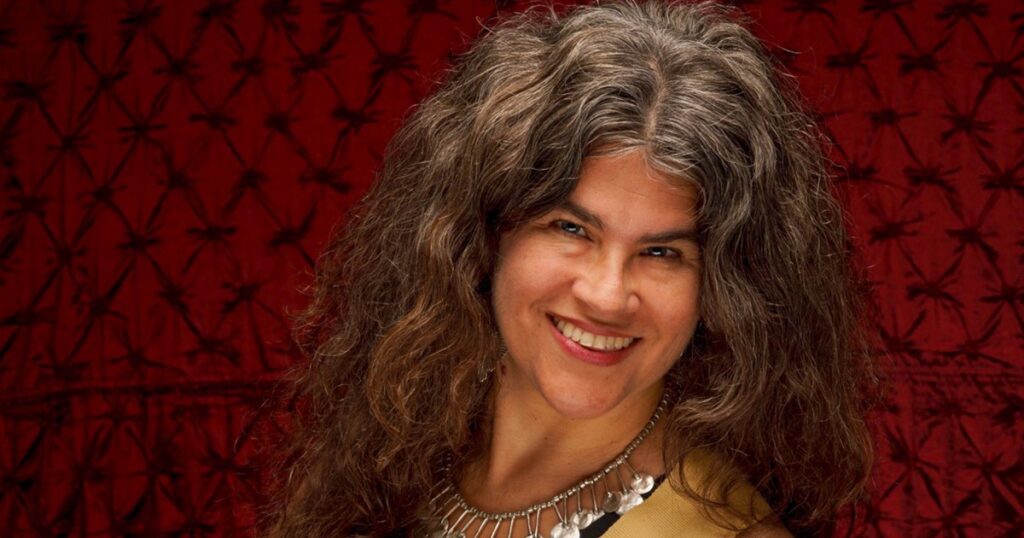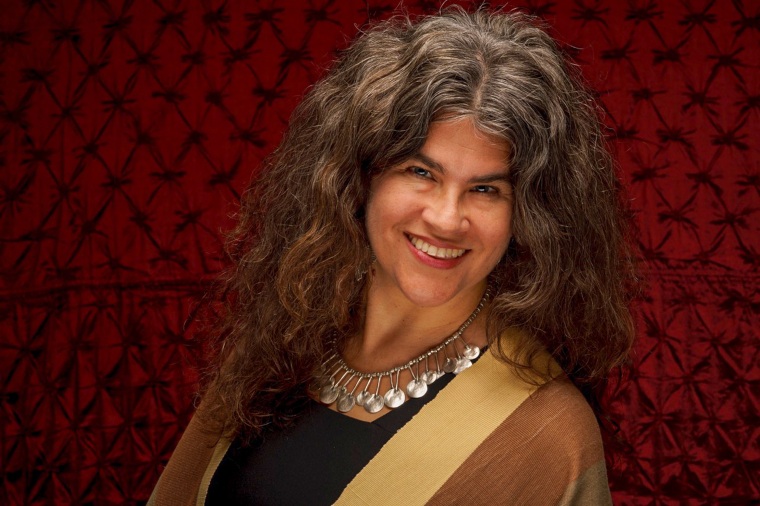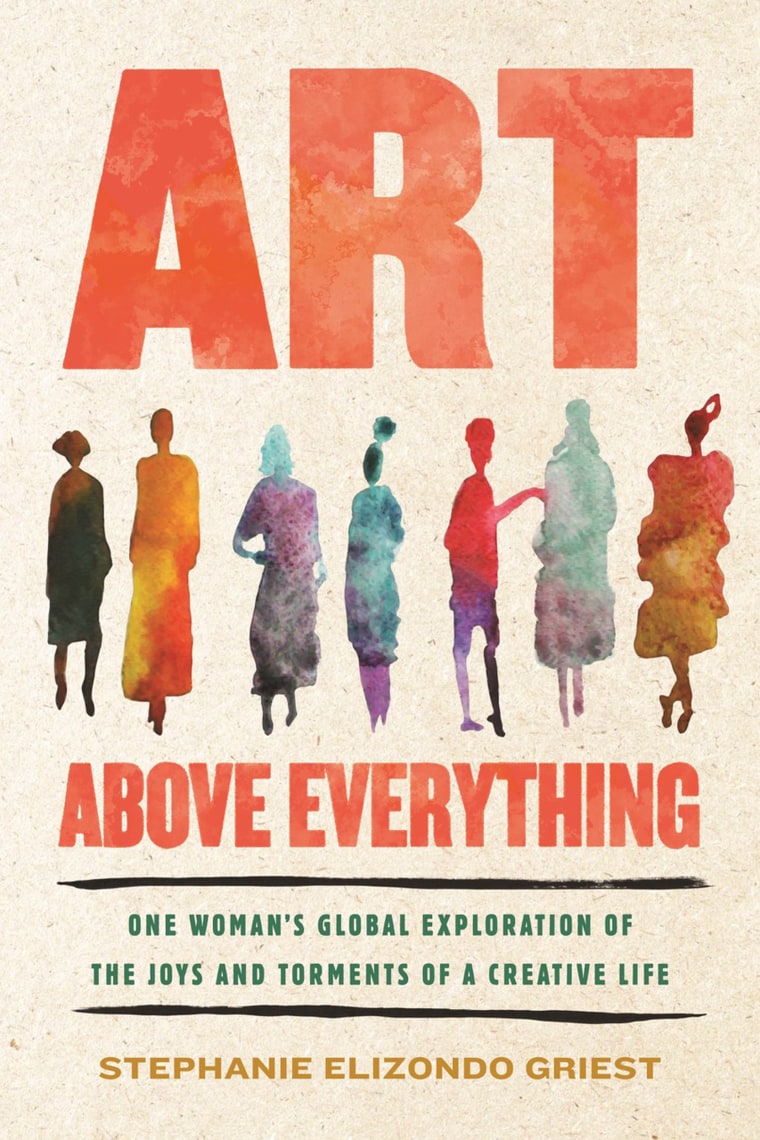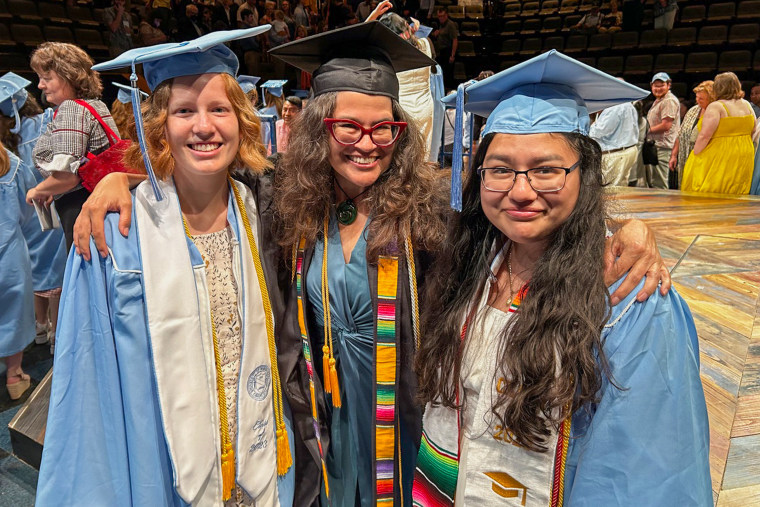
Is living an artist’s life worth the sacrifice?
“The writing life,” author Stephanie Elizondo Griest says, “is like the ultimate hazing experience, because it tests you at every level. You are continually confronted with rejection — plus how are you going to pay the bills?”
Now a professor at the University of North Carolina at Chapel Hill, Elizondo Griest is out with a new book, “Art Above Everything: One Woman’s Global Exploration of the Joys and Torments of a Creative Life.”
In it, she travels to 10 nations and interviews writers, artists and performers from around the world who have devoted their lives to creative pursuits. From Mexico to Qatar, from Rwanda to New Zealand, Elizondo Griest poses the question: Is the pursuit of art worth it?
Elizondo Griest draws from her own experience pursuing a writing career. Though she was constantly working, she had no stable job, no 401(k) and no health insurance. And although she traveled all over the world, she had no home of her own: She was an educated adult woman who at times moved back in with her parents and slept in her childhood bedroom.
She didn’t even own her own cutlery until she was in her early 40s.

“I didn’t set out to live this life, but it has been my fate, a fate that I chose, but not one without serious consequences that become more obvious to me as I aged,” Elizondo Griest said in an interview with NBC News. “’Art Above Everything’ is not a guidebook, it’s more of a prayer if you’ve already done this… There is hope, there is reason and you’re not alone.”
Elizondo Griest, 51, is from Corpus Christi, Texas. She’s the author of several books, including “Around the Bloc: My Life in Moscow, Beijing, and Havana” (2004) “Mexican Enough” (2008) and “All the Angels and Saints” (2017). She has written for The New York Times and The Washington Post, and her awards include a Margolis Award for social justice reporting and a PEN Southwest Book Award. She wanted to write and travel and she’s done that — driving thousands of miles across the U.S., for example, to write about the nation’s history when she worked for an educational website.
The life of the ‘art monk’
Elizondo Griest introduces readers to the concept of the “art monk,” an idea that came to her when she spent time in a Catholic house of prayer in South Texas. The residents of the house had taken vows of poverty, chastity and obedience. “And I had done something rather similar in being an artist. I had put off my fertility to pursue my writing projects,” she recalled.
“But once I got to my 40s, I realized that there were consequences of doing this. So I decided, if I were going to continue down this ascetic path, I needed to find other chanters in the dark,” she writes.
For “Art Above Everything,” Elizondo Griest spent a decade interviewing 70 artists, including acclaimed ballerina Wendy Whelan, bestselling author Sandra Cisneros, leading Rwandan playwright Hope Azeda, acclaimed Indian dancer Surupa Sen and others. Along the way, she belly-danced in Havana, pored over medieval manuscripts in Iceland and wandered through the parliament building in Romania.
Publishers Weekly praised “Art Above Everything” as “inspiring” and “a potent testimony to the value of pursuing one’s passion.”

Elizondo Griest made the decision to focus on female artists because women are underrepresented and undervalued across disciplines in the art world. It wasn’t until the 1970s that women rated a mention in visual art history textbooks, she said, and women are routinely denied leadership roles in major arts organizations. The current political climate, in which diversity, equity and inclusion, or DEI, programs have been targeted by the government, could entrench existing gender disparities.
“The creative life is never easy. It’s not a simple path … but it is one that has tremendous rewards and allows one to fulfill a vision,” Sheryl Oring told NBC News. Based in Philadelphia and one of the artists interviewed by Elizondo Greist, Oring is known for her “I Wish to Say” project, in which she travels the country dressed as a 1960s-era secretary and types up people’s messages to the president on a vintage typewriter.
Oring pointed out that some funding that artists have traditionally relied on — like grants from the National Endowment for the Arts — has been cut or is at risk of being eliminated.
“Many presenting organizations, nonprofits and museums are concerned about their very existence,” Oring said. “There is a simultaneous concern about showing art that might be viewed as controversial. So it is a really difficult time for artists, but that makes our work more important.”

The difficulty of making a living through the arts is shared by all genders. Orlando Rios, a Los Angeles-based actor who’s appeared in “Selena: The Series” and “CSI: Vegas,” said his business “can be like a rollercoaster — but you figure out how to work and sustain yourself. It is not a profession with a linear path, and you have to accept that.”
If people only give themselves a few years to achieve success as a performer,” Rios said, it will likely not happen, since it requires time and patience.
Because Rios also works as a voice actor, he’s concerned about the increasing use of artificial intelligence technology in the entertainment industry. “But you just have to stick with it, to know that you are in it for the long haul,” he said.
As Cisneros tells Elizondo Griest, “It takes a lot of courage to go against societal expectations, gender expectations, cultural expectations. We have to invent our own camino (road). It is a political choice.”
Living one’s most ‘creative life’
For Elizondo Griest, her devotion to writing ultimately helped her through some of the greatest challenges of her life — including the pandemic, the death of her father and a catastrophic illness.
“There was a moment when I began rethinking my life, when I wasn’t sure if I was going to continue living a life, due to this (cancer) diagnosis,” she recalled. “I realized that, thank God I had chosen this path, because all I’d ever wanted to do was travel the world and write about it, and I’d done that … I had zero regrets.”

It was art that enabled Elizondo Griest to persevere through crises. Note-taking grounded her during chemotherapy and the Covid lockdowns. “The sacrifices I made to be an artist caused the bulk of the volatility I experienced in the 20s and 30s,” she writes, “so it is wild that art became my primary self-soothing technique during the turbulence of my forties.”
Now having embarked on a national book tour, she believes that art can help people live through fear, trauma and uncertainty.
“Something really deep, beautiful and powerful about art is that it really, really teaches you that all we have is this moment,” Elizondo Griest said. “So if art is the place that you feel the most fulfilled, then that is how you must fill it, to live your most creative life and make it glorious.”
“And yes,” she adds, “today I have cutlery!”
 Latest World Breaking News Online News Portal
Latest World Breaking News Online News Portal






